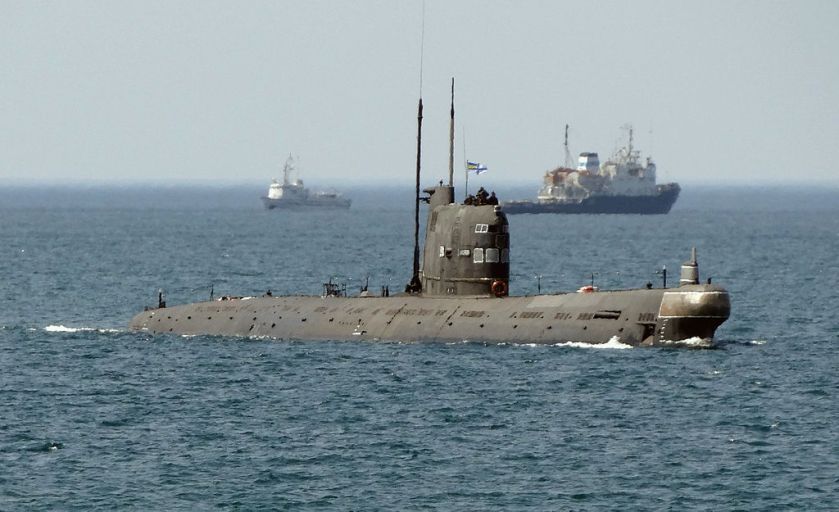B-871, a Kilo class submarine, has an interesting history. This continues our series of unusual Soviet/Russian submarines. Following on from many classes of Soviet attack boats, the Kilo design (NATO designation for these) was a leap forward in capability, with the first boat commissioned in 1980. Kilos had a very different overall hull shape from earlier diesel-electric boats, such as the Tango and Foxtrot classes. With the same armament of six 533mm torpedo tubes and naval mines, they were smaller and harder to detect than Tangos, and were clad in the same sound-absorbing anechoic rubber tiles. More than forty original Project 877 Paltus (the Russian designation) boats were built at five shipyards. Several units were exported to India, China, Iran, Romania, Poland, and Myanmar. Thirty more boats of the “Improved Kilo” or Project 636 Varshavyanka class have also joined the fleets of Russia, Algeria, China, and Vietnam, with more updated boats still under construction.

B-871, built at Gorky shipyard, transited the Volga and Don River/canal systems to its new homeport of Sevastopol, the headquarters of the Black Sea Fleet (BSF), to be commissioned Dec. 1990. It has spent most of its career in Sevastopol, and has now served three navies: The Navy of the Soviet Union, the Ukrainian Navy, and the Russian Navy.

Upon the dissolution of the USSR, in late December 1991, the crew in Sevastopol voted to join the newly-independent Ukraine, in a process we described in our post on the Ukrainian Navy: The Only Easy Day was Never. This new attack boat would have been one of the most able of a small force of mostly abysmal submarines handed over to Ukraine. It would have been a good running mate to the other functional boat, the older foxtrot class submarine Zaporizhzhia.

The Russian official version of this is different, with a crew uprising reported as suppressed immediately and no acknowledgement of Ukrainian Naval service. The submarine was frequently non-operational during the mid-1990s, as the Ukrainian Navy did not have the inventory of parts or the spare batteries to safely operate the sub.
B-871 was back in Russian service by 1997. According to the contemporary edition of Jane’s Fighting Ships, it was extensively modified during 1998. It was fitted with an enormous pump-jet propulsor in place of the usual screw, and received the unique Russian designation of Project 877V. At the time, this was cutting-edge technology for a Russian military submarine. Western powers, such as Britain, had built pump-jet propelled submarines. Adapting the proven Kilo design was a sensible way to trial the technology. Sometime during the early millennium the sub was named “Alrosa,” reflecting its’ sponsorship by this group of diamond-mining corporations.

By the 2010s, after years of uneventful service, Alrosa was supposed to have left Sevastopol to join the Baltic Fleet (though the boat should be close to retirement). The BSF was to upgrade to all improved Kilo type boats. This has not happened, and the current Russian War in Ukraine ensures the boat will not leave the Black Sea. Alrosa was in very lengthy refit which had just finished when Russia invaded Ukraine. The refit also has reportedly involved an enormous upgrade to the lethality of the submarine – launch tubes to be able to operate Kalibr cruise missiles.